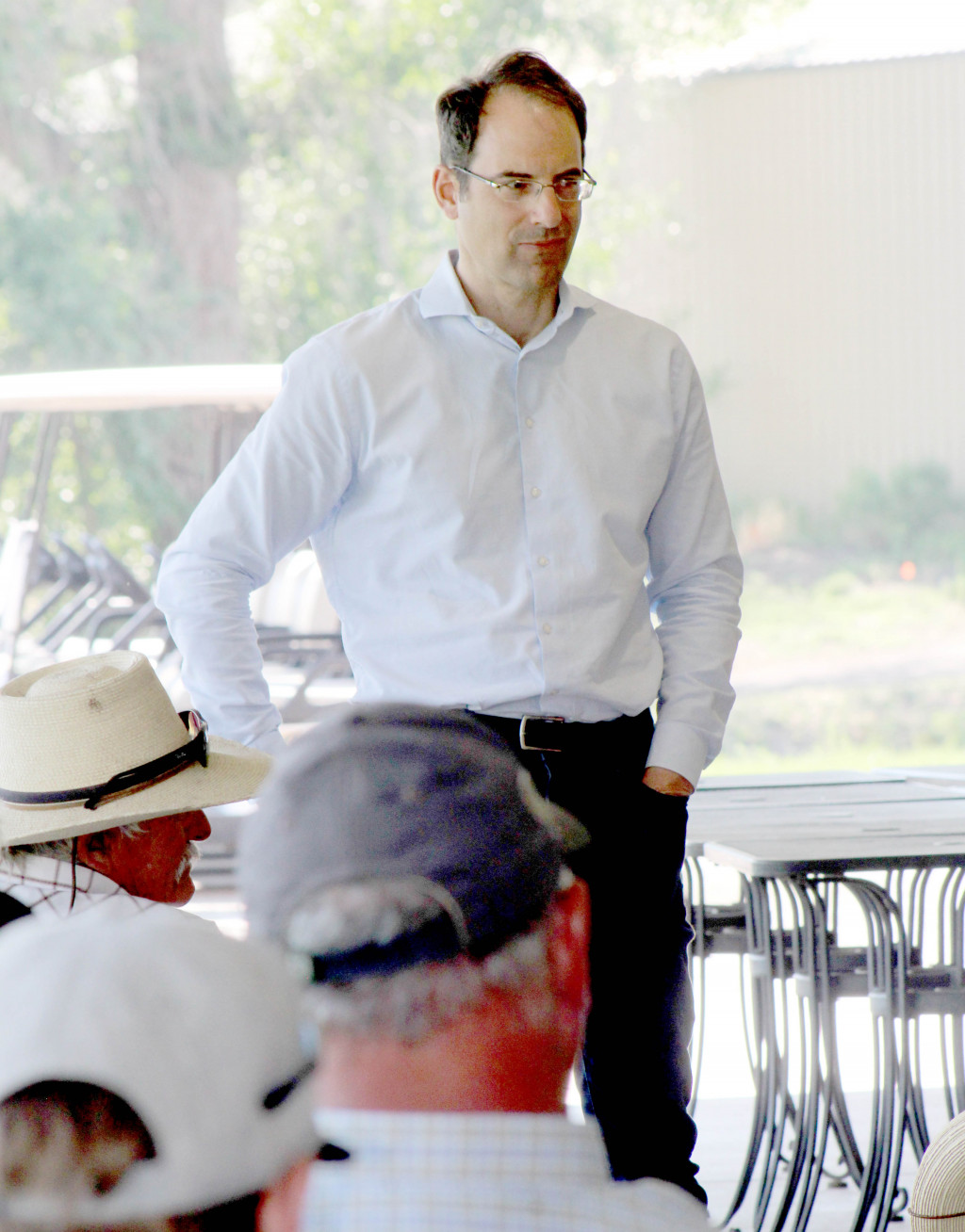AG Weiser talks water, collaboration in meeting with SLV residents

ALAMOSA — When Colorado Attorney General Phil Weiser met with a group of residents from the San Luis Valley on Wednesday to address water issues facing the valley now and in the future, his opening message essentially laid the cards upon the table. Of all the issues facing the valley, the issue of water is at the top.
“The San Luis Valley has two paths to choose from,” he said. One path he described as leading to a bright future full of promise.
In describing the second path, he referred to Crowley County, a county on the southeastern plains that, as a result of selling off 95% of their water rights, have lost half their population, are experiencing an opiate crisis that rivals the worst in the state, is ranked in the top ten counties in the number of deaths from COVID and a housing shortage. “The misery index is very high,” he said.
“But I believe the San Luis Valley will be a tale of successes,” Weiser said, citing the people of the SLV as the valley’s greatest strength. With the cautionary tale of Crowley County as a backdrop, AG Weiser took an unequivocal stand on inter-basin transfer of water. “Water in the San Luis Valley needs to stay in the San Luis Valley.”
He went on to cite another kind of strength:
funding. As part of President Biden’s American Rescue Plan, Colorado is set to receive $3.8 billion, a “one-time opportunity” for Colorado to take on much-needed projects and address those issues that need to be addressed.
Of that $3.8 billion, $100 million will be allocated for water infrastructure via the Colorado Water Conservation Board to “prepare water infrastructure for what’s to come.”
Describing water infrastructure as a “broad term”, Weiser mentioned priorities such as water protection, smart storage and “resilience”, a term also frequently used by Governor Polis and Senator Bennet in discussions of addressing the challenges of climate change.
But, in agreement with the philosophy that has characterized much of the American Rescue Plan, Weiser steered clear of suggesting more specific use of funds, implying those decisions will be left up to those directly involved and most knowledgeable of what projects should take priority. For that, Weiser referred to Heather Dutton of the San Luis Valley Water Conservancy District who indicated that the Colorado Water Plan Grant Program will be involved in directing funds. “We don’t need to create another program to do this,” Dutton said. “We already have a lot of practice with granting funds.”
Weiser also mentioned the possibility of additional funding coming from sports gambling and fines paid in relation to natural resources damages.
In response to a question about an antiquated approach to water rights that no longer applies in 2021, Weiser brought up a theme that was a common thread running through much of what he said. Working together to find solutions. Finding common areas of agreement. Collaboration as an alternative to litigation.
“If everyone asserts their rights, everyone will be in trouble,” he said, adding that attempting to find an agreement that all parties can agree to is no lengthier than the amount of time required for taking issues to court.
A new approach is needed, Weiser said, that does not involve relitigating. “What do you really need” is the question that needs to be asked as a starting point to finding workable solutions.
He closed by discussing the resources available from the AG’s office, adding that a top team of dedicated professionals are ready to serve the needs of Colorado.



